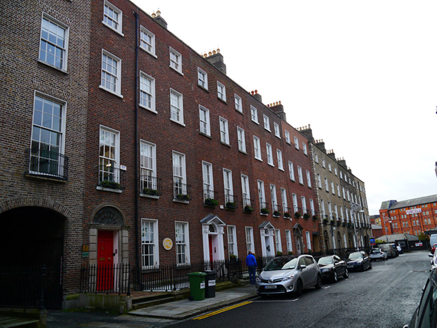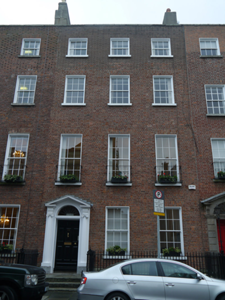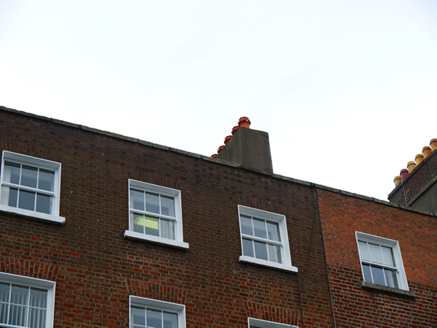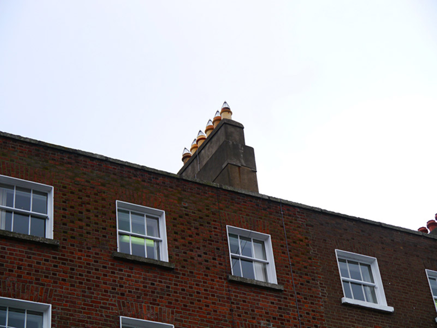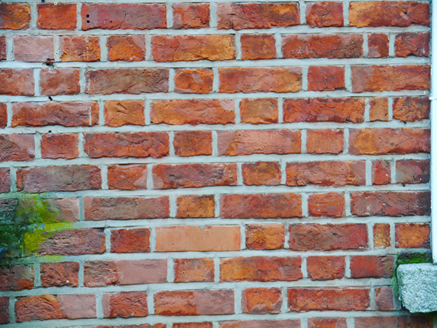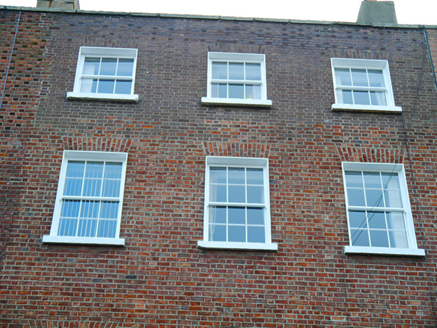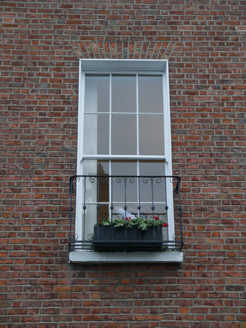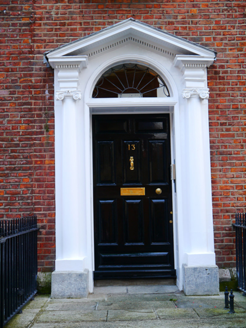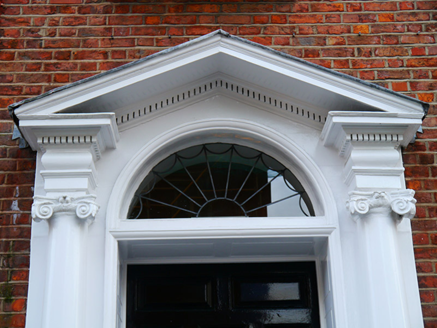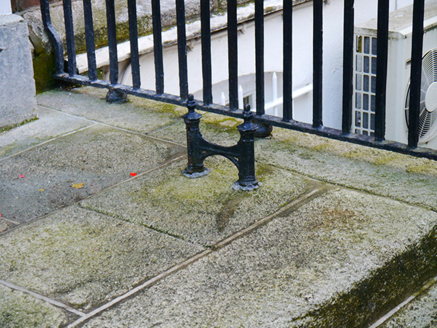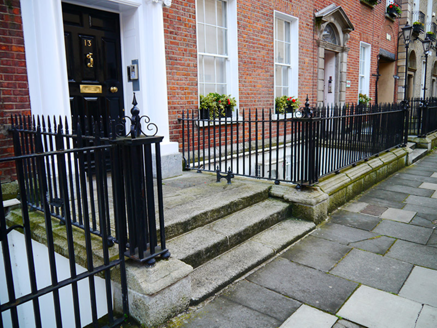Survey Data
Reg No
50930007
Rating
Regional
Categories of Special Interest
Architectural, Artistic, Historical, Social
Original Use
House
In Use As
Office
Date
1770 - 1775
Coordinates
316340, 233269
Date Recorded
21/10/2015
Date Updated
--/--/--
Description
Terraced three-bay four-storey over basement former townhouse, built 1771, as part of a terrace of four (50930006-9). Three-storey flat-roofed return to north of rear (east) elevation. Now in commercial use as offices. Pitched roof to front (west), irregular M-profiled roof to rear (east) with ridge running perpendicular to street and hipped to east, concealed behind parapet with granite coping over. Pairs of chimneystacks to party walls, those to south rebuilt and rendered, those to north are shouldered with lipped clay pots. Concealed gutters with uPVC hopper and downpipe breaking through to rear. Red brick walling laid in Flemish bond (refaced in machined brown brick to third floor) over painted and rendered basement with granite stringcourse over. Painted rendered walling to rear (east) elevation. Square-headed window openings with painted masonry sills, those to principal (west) elevation having patent reveals and brick voussoirs. Window openings to basement set in segmental-headed recessed surround with steel grille affixed to outer reveal. Largely six-over-six timber sliding sash windows with convex horns, three-over-three to third floor. Decorative iron balconettes affixed to first floor sills. Round-headed door opening with painted masonry doorcase comprising engaged Ionic columns on granite plinth stops rising to dentilled lead-lined open pediment, replacement leaded fanlight in moulded architrave over raised-and-field timber panelled door. Granite entrance platform with cast-iron boot scraper, and three steps to street, flanked by iron railings with decorative corner posts on granite plinth enclosing basement well to south. Plainly detailed square-headed door opening beneath entrance platform with recent timber glazed door and sidelight. Street fronted on the east side of Ely Place.
Appraisal
Numbers 11-14 were built as a cohesive terrace by carpenter Robert Price. The houses are characterised by well-proportioned facades which are enriched by good classical doorcases and iron balconettes. Despite the insertion of some replacement fabric the terrace is an excellent examples of the Dublin Georgian idiom, interiors with original joinery (Casey 2005). Following the purchase of the property by the select vestry of St. Peter’s parish from Lord Trimlestown in 1897, it was altered to the designs of W.M. Mitchell, as a residence for the rector. Originally named Hume Row, Ely Place was laid out in 1768, and was named after the surgeon Gustavus Hume who built his house at No. 1 Hume Street (now demolished). With the construction of Ely House (50930012) in 1770, Ely Place developed as a desirable residential street throughout the late-eighteenth and early-nineteenth centuries.
